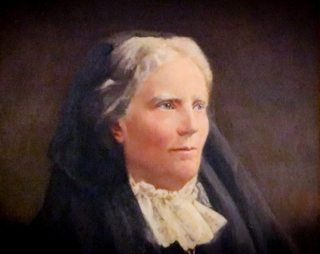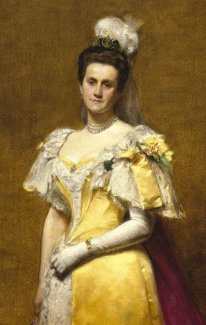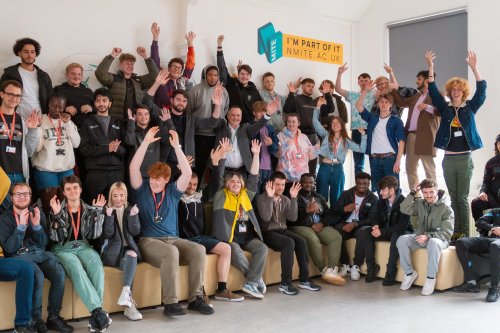We will start with some good news, and that is that the number of women in science, and in engineering, is growing! However, men continue to make up the numbers, especially within the upper levels of these professions. Typically, girls and boys from Primary school through to Secondary School - in particular, up to Year 9 when students usually choose their subjects - take maths and science courses in roughly equal numbers. It is at sixth-form level, where women have been shown to be less likely than men to study science, technology, engineering, or maths (STEM), and by the time students reach Higher Education level, men outnumber women in nearly every science and engineering field. In some of these fields, such as physics, engineering, and computer science, the difference is dramatic.
Women’s representation in science and engineering declines further at graduate level and yet again in the transition to the workplace – but women can do, and have done, incredible things when it comes to STEM. Today, we will be celebrating some of the great ‘firsts’ achieved by women over the years, as we continue to inspire the next, more inclusive, generation of engineers.
The First Woman in Medicine – Practical joke or Medical Marvel?
Dr Elizabeth Blackwell received her medical diploma from Geneva Medical College in 1848 after she was rejected at schools in Charleston, Philadelphia, and New York. She was permitted to join the College after the 150 male medical students voted in her favour believing that it was a practical joke! Once she had completed her post-graduate studies in Paris and London, she returned to the United States, and by 1857 she established the New York Infirmary for Women and Children. She also assisted the establishment of the London School of Medicine for Women in 1874-1875. Dr Blackwell was the first woman to be placed on the medical register and to practice in England. It is believed by many that the medical profession would not have been what it is without her.

The First Woman Architect – The Mystery Architect
Elizabeth Wilbraham has been proven to be the first woman architect dating all the way back to the 17th century. While women at the time were not actually allowed to practice, there is clear evidence that she designed dozens of buildings for her family. As a (somewhat secret) architect she was greatly inspired by her studies and her designs have Italian and Dutch influences while having retained the sophisticated British style. She was never able to supervise the construction of her designs because of her gender, and so she had the assistance of a series of men who were believed to be architects at the time. Scholar John Millar, who researched her work, believes that Mrs Wilbraham was the mystery architect who, at the very least, influenced approximately 400 buildings, including 100 buildings attributed to Christopher Wren. According to Mr Millar, evidence is hard to find since Mrs Wilbraham had to hide her involvement due to it being socially unacceptable at the time for a woman to be an architect. However, there is no doubt, that she was effectively the first woman architect.
The First Woman to Win the Nobel Prize – it takes two!
The first woman to win a Nobel Prize was also the first person to have been awarded it twice – quite the achievement! Marie Curie travelled to Paris at the age of 24 to study physics and mathematics at the Sorbonne. She met her husband Pierre Curie who was a professor at the school of Physics, and they got married in 1895. The Curies were working on radioactivity when and in July 1898, they announced the discovery of polonium. A few months later, they also announced the discovery of radium. The Curies received a ¼ each of the Nobel Prize for Physics in 1903, along with Becquerel. After the sad passing of her husband in 1906, Marie became the first woman to teach at the Sorbonne. In continuing the work Marie and her husband started, she received a second Nobel Prize for Chemistry in 1911. During World War I, the International Red Cross appointed her as the head of its radiological service after she equipped ambulances with X-rays. Regrettably, Marie Curie always received great opposition from male scientists, and she never received fair financial benefits for her work. She has inspired women worldwide throughout the years, including her daughter Irene, who also went on to become a winner of the Nobel Prize for Chemistry.
The First Woman Engineer – The Silent Builder
Officially, the first female engineer is Elizabeth Bragg who was the first woman to receive a bachelor’s degree in engineering in 1876. However, Mrs Bragg never worked as a professional engineer. Emily Warren Roebling, who never actually received an engineering degree, is known as the “silent builder” of the Brooklyn Bridge. Emily’s father-in-law had died of tetanus, and her husband suffered decompression sickness while working in the caissons for the bridge piers. Mrs Roebling took notes from her husband, and she taught herself structural engineering including strength of materials, stress analysis, cable construction and calculation of catenary curves. She managed the building of the bridge and she defended her husband’s work to competitor engineers and politicians. At the official opening of the bridge in 1883, Mrs Roebling rode with President Chester Arthur across the great bridge, and she then received a certificate in business law from the Woman’s Law Class at New York University in 1899.

The First Woman Computer Programmer – The Enchantress of Numbers
Ada Lovelace is considered by many “the first computer programmer” as the author of the first elaborate, complete, and published programs. She grew up in the early 19th century and she studied science, logic, and mathematics. She worked closely with Charles Babbage on his calculating machines who called her “The Enchantress of Numbers”. In 1842, she translated and expanded the article of the Italian mathematician Luigi Menabrea on the Analytical Engine by including several early “computer programs”. The Analytical Engine remained a vision for another century before Alan Turing was inspired by her work. Ada Lovelace is a powerful symbol for modern women, and she inspires girls, even today, to join STEM professions.






